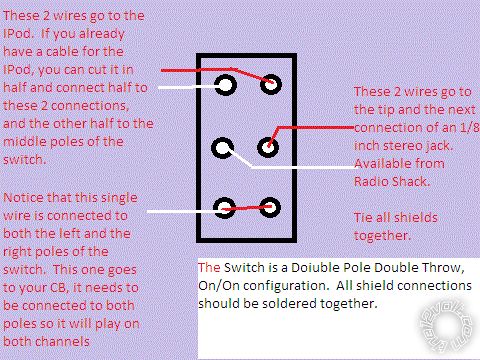Posted: September 16, 2010 at 12:11 PM / IP Logged
Posted: September 16, 2010 at 5:49 PM / IP Logged
Posted: September 16, 2010 at 10:19 PM / IP Logged
Posted: September 16, 2010 at 10:44 PM / IP Logged
Sorry, you can NOT post a reply.
This topic is closed.
 Printable version
Printable version


| You cannot post new topics in this forum You cannot reply to topics in this forum You cannot delete your posts in this forum You cannot edit your posts in this forum You cannot create polls in this forum You cannot vote in polls in this forum |

| Search the12volt.com |
Follow the12volt.com 
Wednesday, December 17, 2025 • Copyright © 1999-2025 the12volt.com, All Rights Reserved • Privacy Policy & Use of Cookies


Wednesday, December 17, 2025 • Copyright © 1999-2025 the12volt.com, All Rights Reserved • Privacy Policy & Use of Cookies
Disclaimer:
*All information on this site ( the12volt.com ) is provided "as is" without any warranty of any kind, either expressed or implied, including but not limited to fitness for a particular use. Any user assumes the entire risk as to the accuracy and use of this information. Please
verify all wire colors and diagrams before applying any information.








 Assuming common commons (ground) and stereo, you require a DPDT switch.
Think of it as 2 poles (sides or circuits) and each pole has 2 positions aka Throws (hence 2P2T or DPDT = Dual Pole, Dual Throw - where T = Throw is position.
So one throw/position is from CB; the other from iPod. The centre goes to the audio in.
The same is done for the other channel on the other Pole (with CB left adjacent to CB right etc).
The common for all are connected together.
If that is not allowed (for ground loop other reasons), then an extra pole is needed to connect them the same way as the left & rights.
Hence a 3PDT switch is required.
I'll assume that separate right and left returns (commons, -, etc) are NOT required - that usually requires isolation (transformers etc).
You should be able to find this covered complete with diagrams...
It is a common situation.
Assuming common commons (ground) and stereo, you require a DPDT switch.
Think of it as 2 poles (sides or circuits) and each pole has 2 positions aka Throws (hence 2P2T or DPDT = Dual Pole, Dual Throw - where T = Throw is position.
So one throw/position is from CB; the other from iPod. The centre goes to the audio in.
The same is done for the other channel on the other Pole (with CB left adjacent to CB right etc).
The common for all are connected together.
If that is not allowed (for ground loop other reasons), then an extra pole is needed to connect them the same way as the left & rights.
Hence a 3PDT switch is required.
I'll assume that separate right and left returns (commons, -, etc) are NOT required - that usually requires isolation (transformers etc).
You should be able to find this covered complete with diagrams...
It is a common situation.



